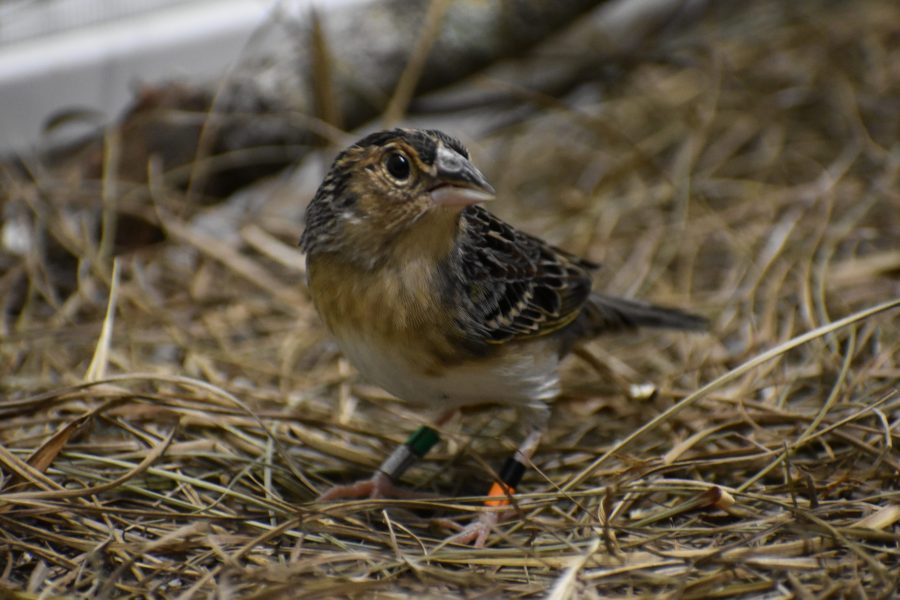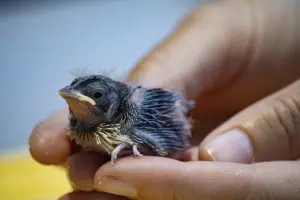

Nesting season for our Florida grasshopper sparrows has ended for this year, and we’re so proud of the impact our resident sparrows made this year for this critically endangered species!
 Thanks to our sparrow pairs and their animal care team, 57 chicks hatched this year! Many have been released back to their native range, but many are staying within the Florida Grasshopper Sparrow Working Group to act as new breeding pairs with different genetics. This collaborative conservation effort to save this species is made up of our Zoo, White Oak Conservation, the Florida Fish and Wildlife Conservation Commission, United States Air Force, U.S. Fish and Wildlife Service and Archbold Biological Station.
Thanks to our sparrow pairs and their animal care team, 57 chicks hatched this year! Many have been released back to their native range, but many are staying within the Florida Grasshopper Sparrow Working Group to act as new breeding pairs with different genetics. This collaborative conservation effort to save this species is made up of our Zoo, White Oak Conservation, the Florida Fish and Wildlife Conservation Commission, United States Air Force, U.S. Fish and Wildlife Service and Archbold Biological Station.
This critically endangered species is found only in a few areas of Central and South Florida. About 9 years ago, just over 100 members of their species were found in their natural range. Thanks to the work of this group, more than 1,000 sparrows have been released back to their native habitat!
While we are so proud of our resident sparrows and our team, we want to note that this was a difficult nesting season for all. Due to a harsh drought and other environmental factors, the eggs and chicks at our Zoo had some trouble developing and thriving.
We also said goodbye to some of our older sparrows Vince, Gator and Wild One along with a younger sparrow Fettucine. We are so thankful for their contributions to their species and we will always fondly remember them. It was an honor to watch over them and their chicks.
This season did have some bright moments, however. We were able to take in several eggs and chicks from the sparrows’ natural range whose parents were no longer able to care for them. By adding them to our own resident sparrows’ nests, we were able to help these little ones thrive. One chick was brought in after her nest was overrun by fire ants – and she has been fittingly named “Phoenix!” Another sparrow chick, now named “Nessie,” came to us after their nest was flooded.
Our sparrow residents will now enjoy a well-earned break before next year’s nesting season begins. We may change our pairs up again in order to introduce new genetics to this endangered population. These pairings will be chosen by a studbook keeper, who studies the genetics of our pairs and the overall population to make these recommendations. We look forward to sharing more updates on them soon!
